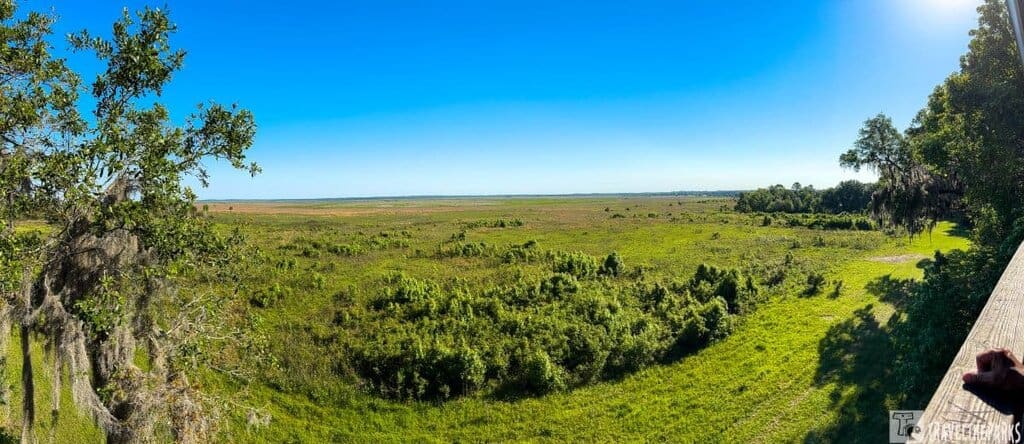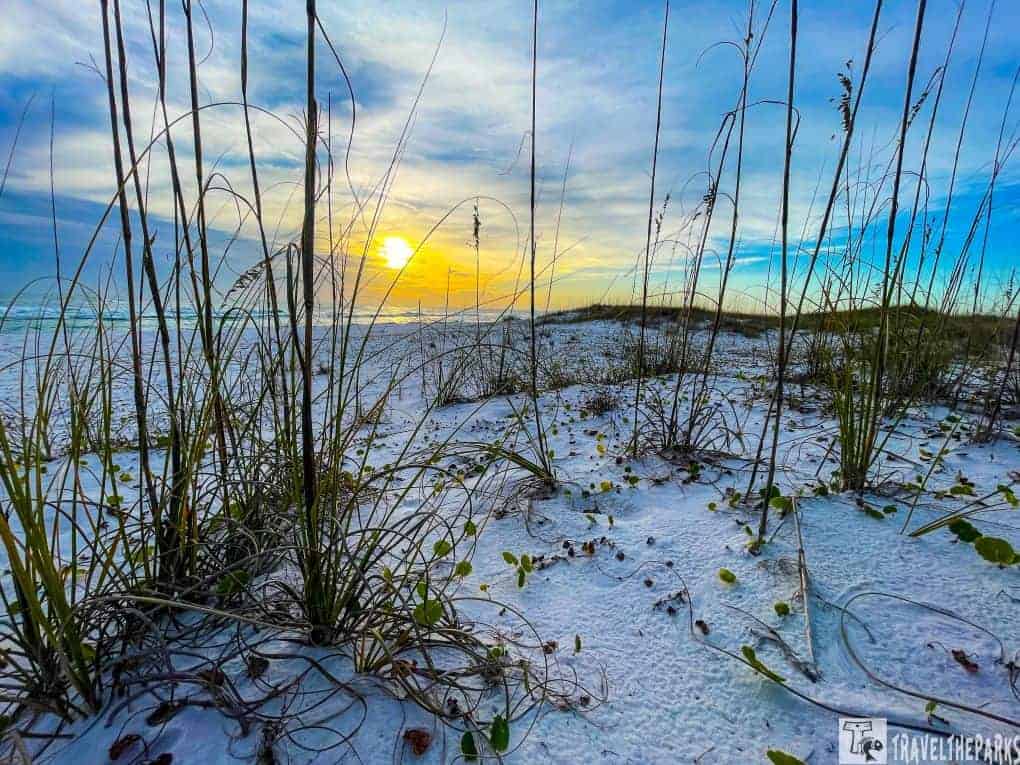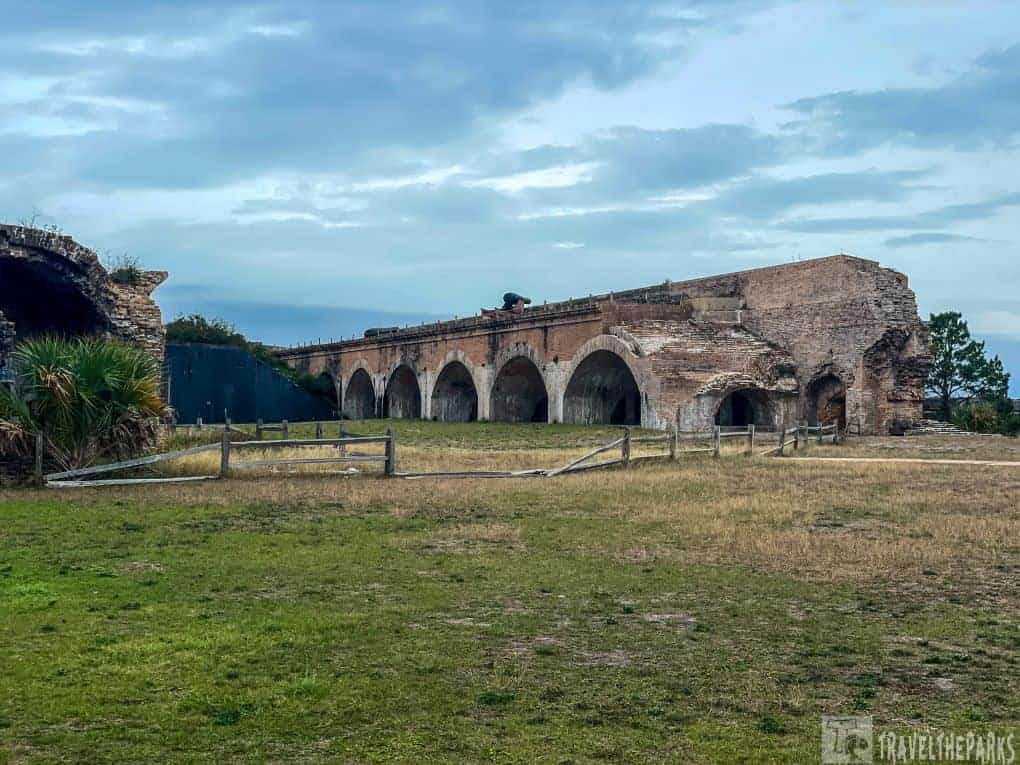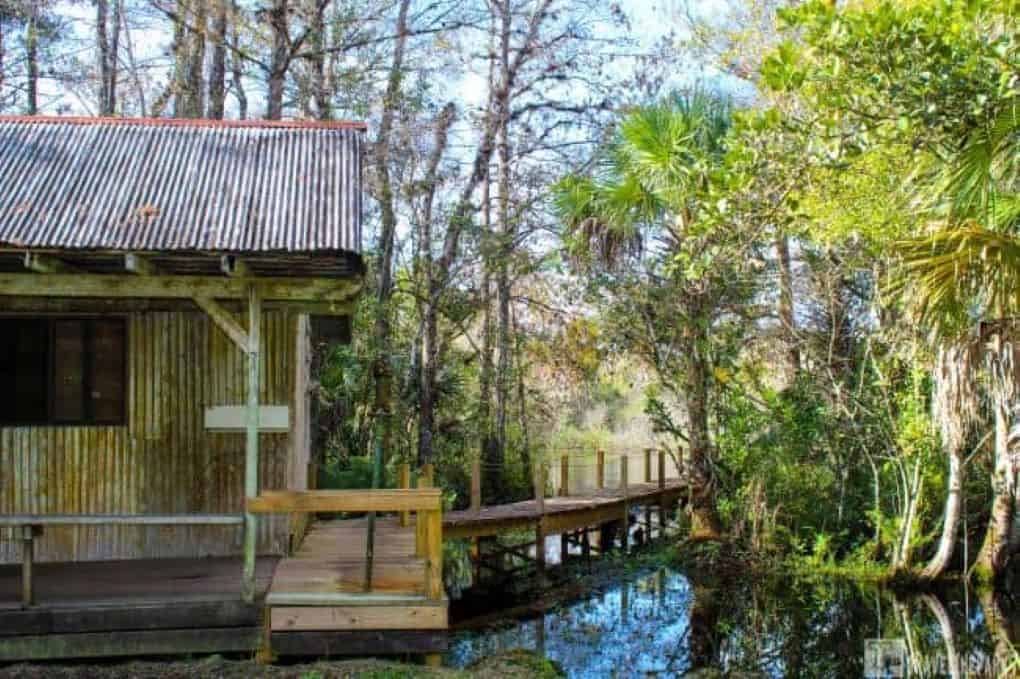Paynes Prairie Preserve State Park is one of our go-to spots for nature, wildlife, and splendid views. In Micanopy, Florida, we stayed a few nights at the Puc Puggy Campground. It’s a fantastic destination for RV travelers planning a weekend trip. Paynes Prairie Preserve State Park is a beautiful 21,000-acre Florida savanna. It’s a real hidden gem. This place has a lot of trails for you to hike. You might even see bison or wild horses. This guide covers the best spots and fun activities. It also shares helpful tips for your visit.
Interesting Fact: In 1975, as part of an effort to revive Florida’s native savanna environment, 10 plains bison were brought to Paynes Prairie from Oklahoma’s Wichita Mountains Wildlife Refuge. While bison had once lived freely in Florida, they disappeared from the region by the early 19th century. This project successfully returned a native species to its original range.
This post may contain affiliate links, meaning if you purchase something through one of these links, we may earn a small commission at no extra cost to you! Read the full disclosure policy here.


Table of Contents
What to Know Before You Visit Paynes Prairie State Park
- Park Hours: open 365 days a year from 8:00 AM to sundown. The visitor center is open from 9 am to 4 pm daily.
- Entrance fees: $6 per vehicle, or you can use the Florida State Park Annual Pass. Check the official park website or call ahead for up-to-date information.
- Best Time to Visit: Winter (Dec-Feb): Mild, pleasant temperatures make it ideal for outdoor activities. Spring (Mar-May): Warmer with lower humidity, great for wildlife and birdwatching. Fall (Sep-Nov): Pleasant temps, but expect more humidity and occasional rain, especially in September. Summer (Jun-Aug): Hot/humid, and stormy, with highs in the 90s°F (32-35°C). Not the best for outdoor activities.
- Pet Policy: Well-behaved dogs on a six-foot leash are allowed on certain trails. Pets are not permitted on playgrounds, in restroom areas or in park buildings.

After leaving Andersonville RV Campground, we hit the road, cruising down I-75 towards our next stop: Micanopy. Paynes Prairie offers 49 spacious campsites tucked beneath a canopy of mature oaks, providing plenty of shade and privacy. Whether you’re pitching a tent, parking an RV, or towing a trailer, you’ll find accommodations to suit your needs – including sites with 30/50 amp electrical service and convenient water hookups.
Once inside Paynes Prairie, we located our campsite and settled in. With our camp set up, it was time to explore!
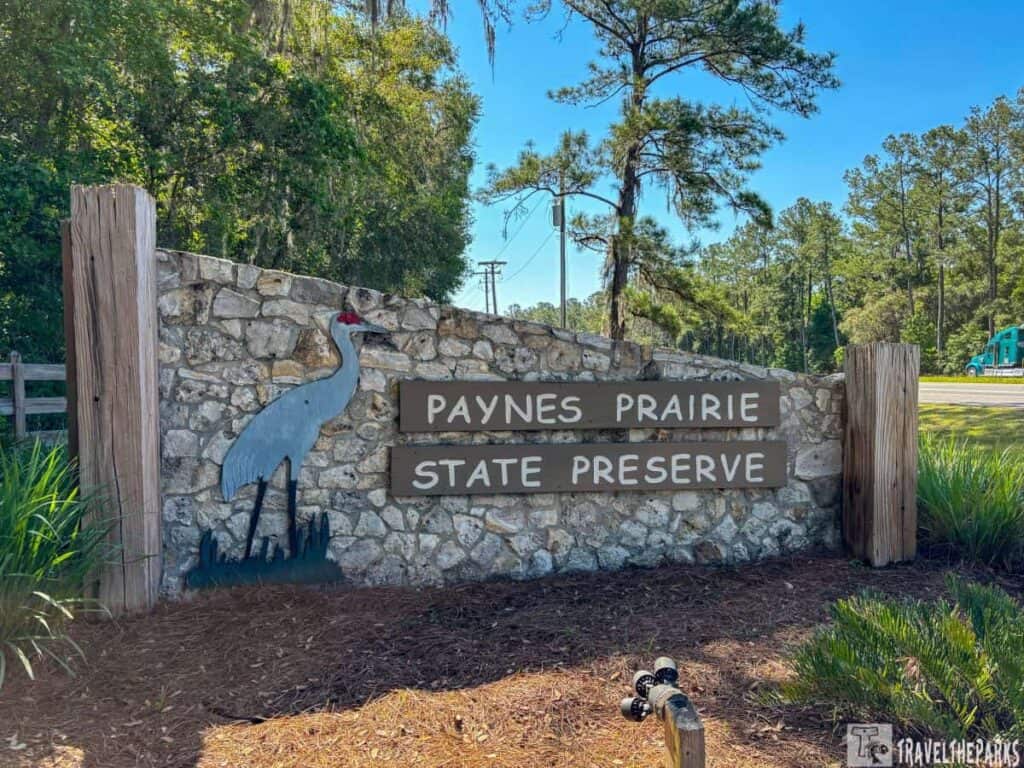
Exploring Paynes Prairie Preserve State Park
We grabbed our German Shepherd, Sage, and headed out for a walk to the picnic area near Lake Wauburg. The trail from the campground winds through lush wetlands and thick vegetation, with the shade of oak trees draped in Spanish moss providing a refreshing cover from the sun. As we reached the boardwalk by the lake, I couldn’t help but laugh. Sage has this odd dislike for boardwalks and piers, and, of course, I had forgotten about that. It’s funny, though I know I shouldn’t find his little fear amusing. Despite his hesitation, we managed to get him onto the pier.
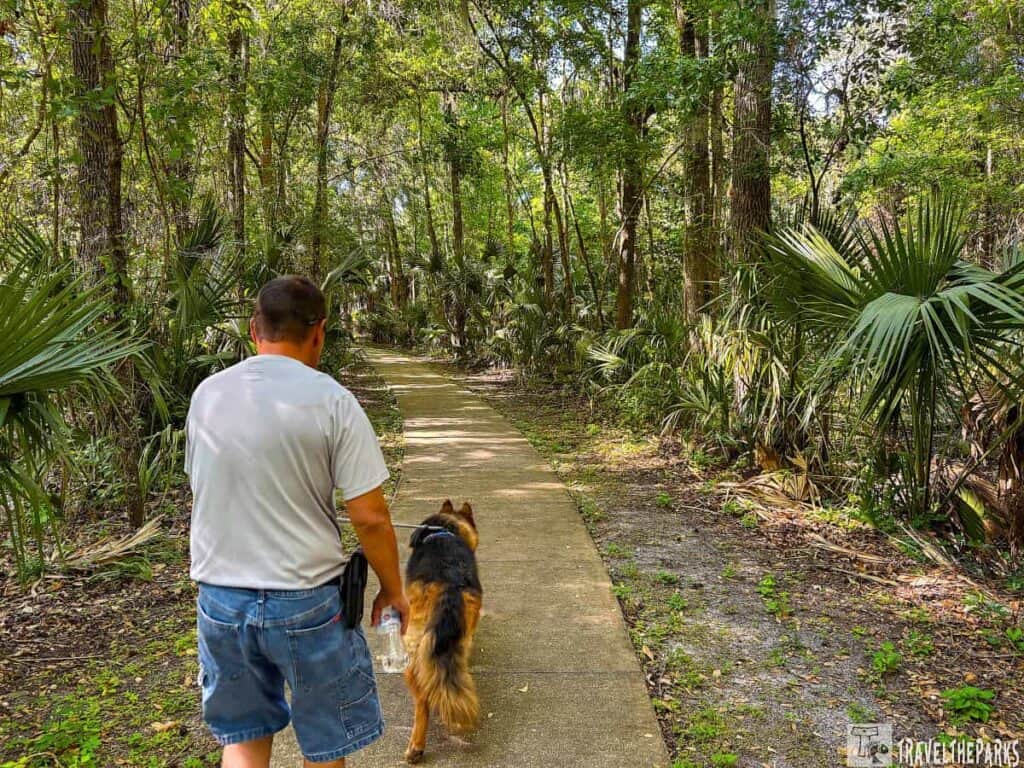
Once there, we were treated to stunning views—perfect for birdwatching, so be sure to bring your binoculars! We spotted plenty of alligators lounging in the calm waters. As we continued along the boardwalk, Sage finally settled into his walk, his curiosity piqued by the surroundings.
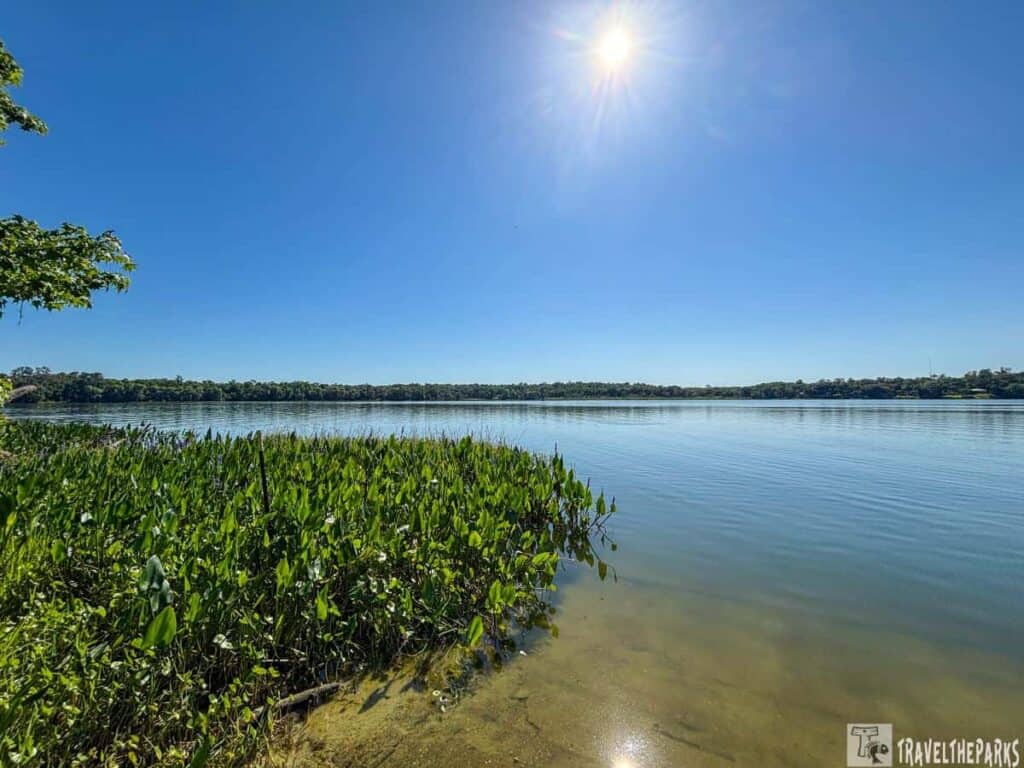
What Makes Paynes Prairie Preserve So Unique?
At Paynes Prairie Preserve State Park, you enter a vibrant tapestry of prairies, wetlands, and forests. Florida’s original state preserve, it is the only place where you can experience a truly unique adventure you cannot duplicate elsewhere in the state – wild horses and bison grazing free as they did centuries ago.

Water is the lifeblood of this amazing destination. It’s situated in the middle of the Paynes Prairie Basin and flows into the Alachua Sink, forming a dynamic freshwater marsh filled with life. Over 300 species of birds and more than 420 types of animals inhabit it. The prairie’s history has been one of determination. Once drained by canals that lowered its water table, restoration attempts since 1970 have rebuilt its natural cycles. Today, having been a National Natural Landmark and a component of the Great Florida Birding Trail, Paynes Prairie contains unlimited opportunities for observing wildlife. From wading birds and butterflies, and sun-basking alligators to free-roaming horses grazing in the sweeping open fields.
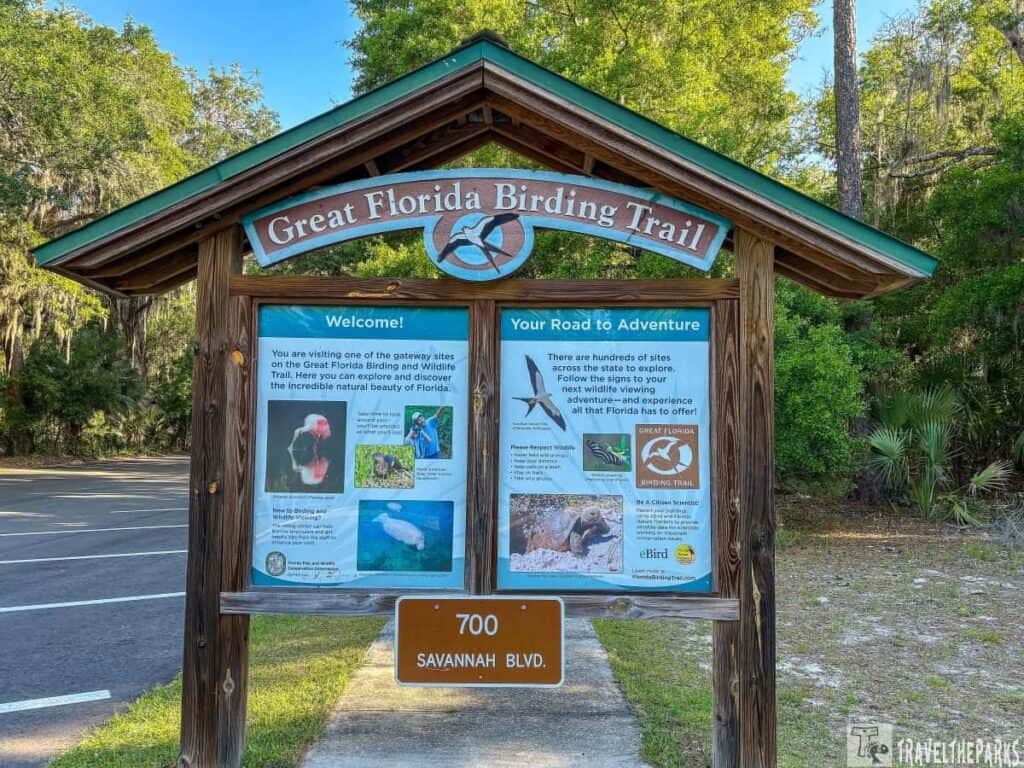
Hiking the Lake Trail
The next morning, we woke up in our comfy camper to the sound of birds singing. We made a cup of coffee and then went for a quick walk with Sage. The air felt cool and fresh as we walked outside. A soft mist floated up from the surface of Lake Wauburg, making the scene calm and dreamlike. A peaceful beginning sets a great mood for the day to come.

We made up our minds early to tackle the Lake Trail, which stretches about a mile from the parking area by Lake Wauburg to the Alachua Savannah Visitor Center. What started out as a picturesque stroll by the lake took a turn suddenly. The instant we left the refreshing breeze by the lake, the sun seemed to double its intensity. The heat hit us like a wall. It felt like we’d stepped into a giant oven—without the benefit of a cool breeze or any shade to speak of.
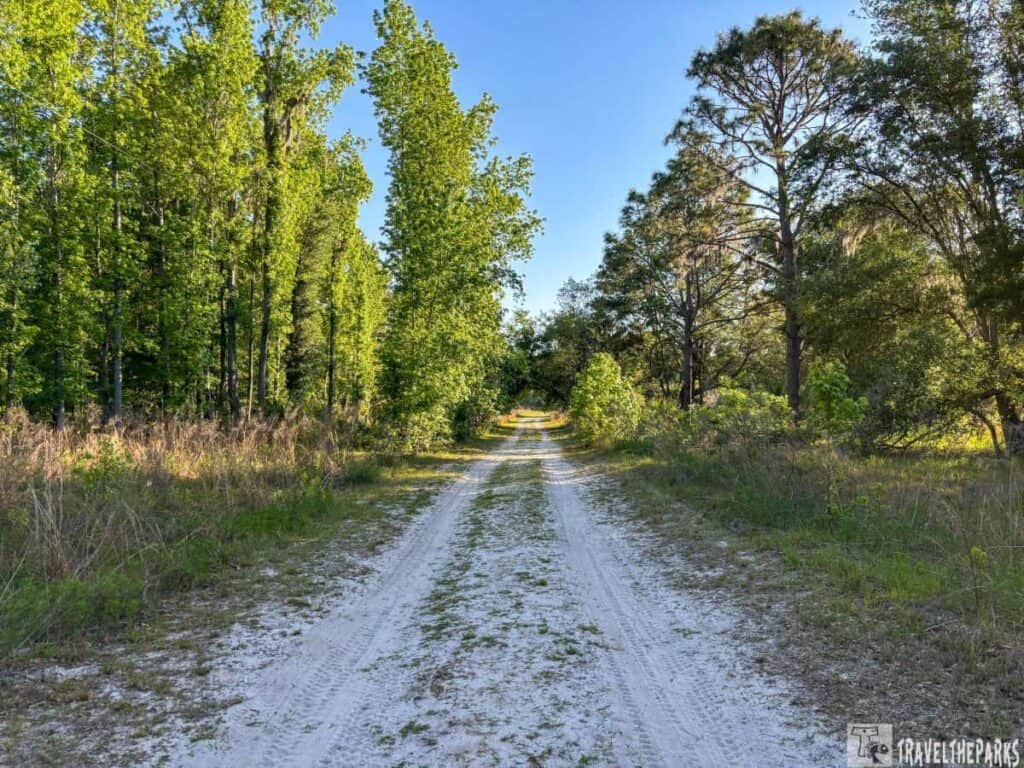
With each step, I felt like the temperature rose. Sweat began to form on our skin; every footfall stirred up a cloud of dust that clung to our shoes. The trail, once a welcoming path, started to feel as if we were traversing a desert instead of a nature preserve. It was somewhat challenging, but we persevered, resolute in our goal to reach the Visitor Center.

And then we arrived, and just as we were getting our breath, we caught sight of something that made it all worthwhile—a lone deer, standing perfectly still behind a tree at the end of the trail. It looked at us wordlessly. Its eyes almost knowing, as if to say, “This heat? It’s nothing. Welcome to my world,” before disappearing into the trees.
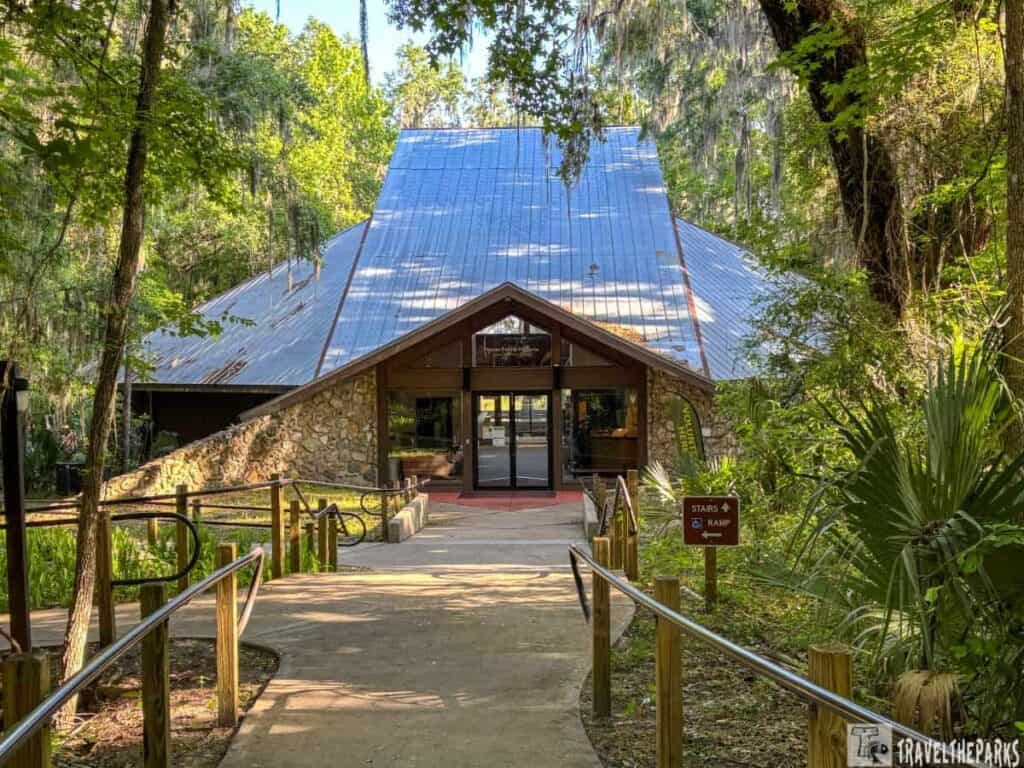
Alachua Savannah Visitor Center
After the sweltering hike, the visitor center felt like stepping into an oasis. Inside, the cool air hit us like a gentle breeze, and we wandered through the exhibits. The inside is well-arranged, showcasing local history and wildlife. The space has an almost reverent vibe. I was especially interested in the geology of the park. We lingered by the windows, gazing out over the vast, rolling landscape, but the real adventure was just ahead.
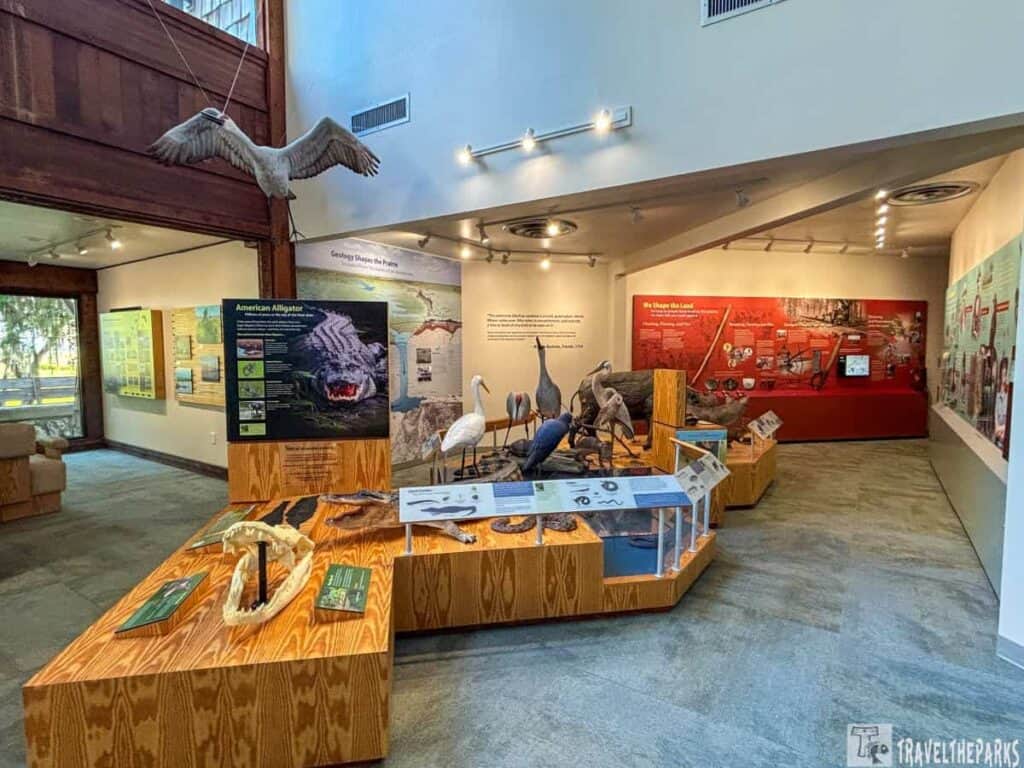
Feeling refreshed, we headed toward the observation tower, excited to see the prairie from a higher viewpoint. The 0.25-mile Wacahoota Trail takes you to the observation tower. The dense forest clears to reveal a tower that stands 50 feet tall. When we got to the tower, we stopped for a moment and looked up at how tall it was. Climbing it felt like we were getting a bird’s-eye view of this vast and untamed world. When we got to the top, the view looked almost like a dream. The setting seemed more like Wyoming instead of Florida. We stood together, looking at the prairie and the wild horses in the distance before heading back the way we came.

Top Things to See and Do at Paynes Prairie
Kayak Fishing on Lake Wauburg: A Paddler’s Paradise!
Lake Wauburg, a scenic 300-acre lake, is perfect for peaceful paddling and fishing. Gas-powered boats aren’t allowed, making it a quiet retreat for kayak and canoe enthusiasts. If you have your own vessel, you can launch it from the ramp inside Paynes Prairie Preserve State Park. However, canoe rentals are not available at the park itself. Looking to rent? Head to the North Shore Recreation Area—but keep in mind, rentals there are only available to guests sponsored by a GatorOne Holder (anyone with an official University of Florida GATORONE ID). Guests at the lake can enjoy canoes, paddleboats, rowboats and kayaks. We’re planning an outing for our next park visit.
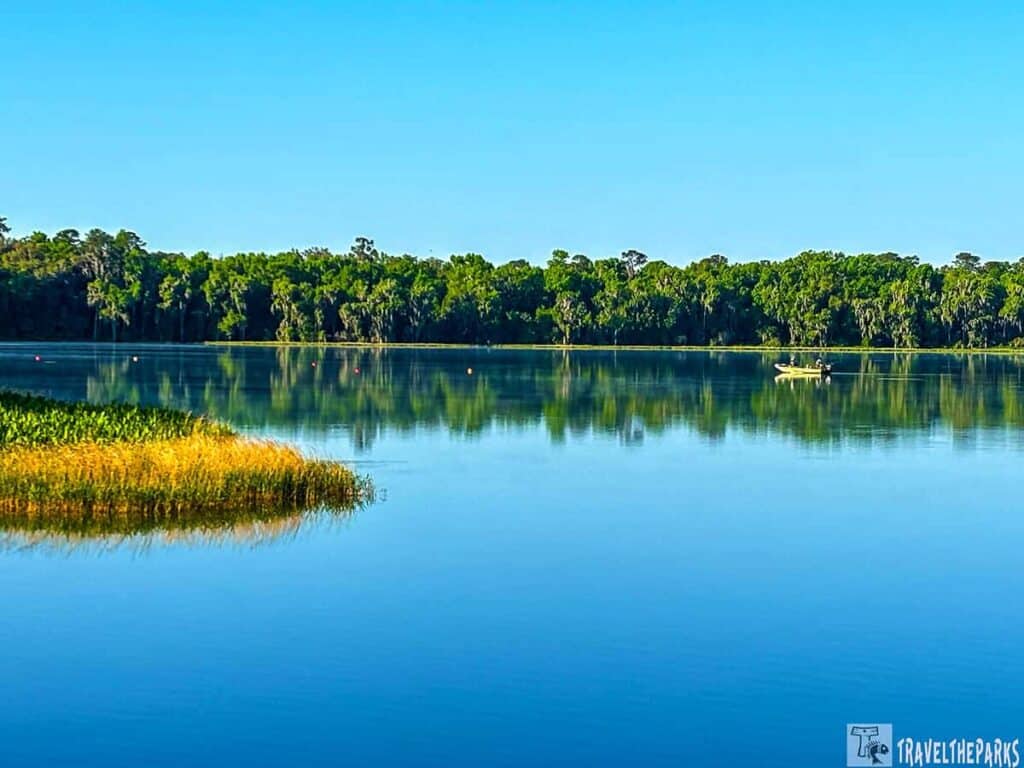
Must-Explore Hiking Trails at Paynes Prairie
Paynes Prairie Preserve State Park is a hidden gem that shows off Florida’s wild side — and no, it’s not all beaches and theme parks. This unique landscape is the only place in the state where you can spot free-roaming bison and wild horses. Yes, you read that right. One of the park’s biggest draws is its herds of wild bison and Spanish horses, often seen grazing across the prairie. The best place to spot them? Head to the observation platform at the La Chua Trail, especially in the cooler mornings or before sunset. Here is a link to a map of Paynes Prairie Preserve State Park to help you plan ahead.
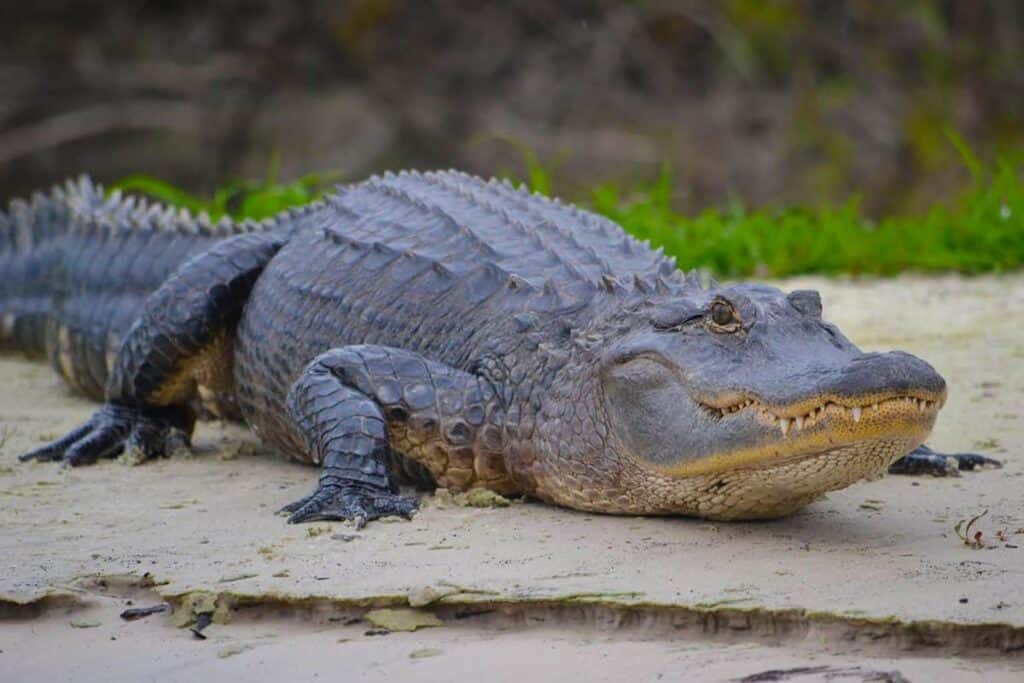
Hike the La Chua Trail
I had heard about the La Chua Trail from a friend — that it’s not just a walk—it’s an adventure. As the afternoon sun stretches low across the northern edge of Paynes Prairie (Gainesville entrance), we tackle the La Chua Trail (no pets). The walk is one mile total, starting on a grassy path, then past an old train trestle, an old ranch barn, and finally a wooden boardwalk.
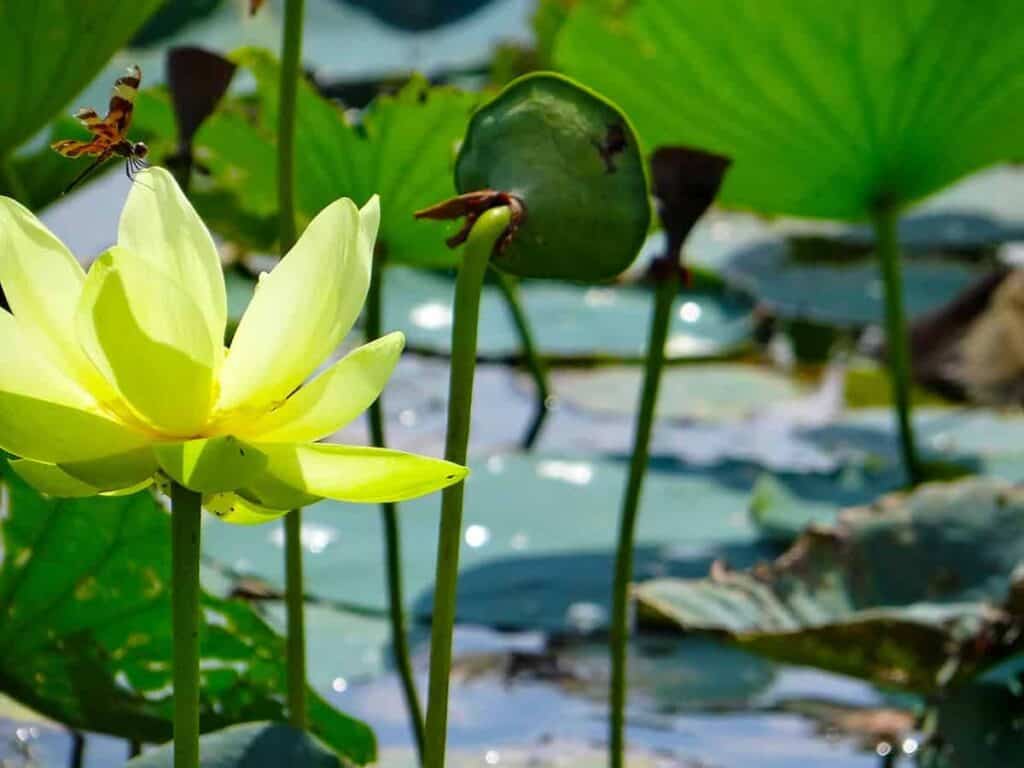
This 0.5-mile boardwalk leads to the Alachua sink before opening into a sea of golden wetlands. The path at one time went all the way to a platform. The trail is currently inaccessible due to overgrown vegetation. At the sink if you’re lucky, a wild horse or even a bison might wander into view, framed by the warm glow of the setting sun. We saw them, but they were way in the distance.
Today it is gator-central. They were everywhere. Despite living in Florida, I never get tired of seeing these prehistoric dinosaurs. I think we saw more gators here than in either Everglades Shark Valley or Big Cypress Preserve.

One of the most notable features along this trail is the Alachua Sink. It is a karst sinkhole, formed when underlying limestone rock dissolves over time, causing the ground above it to collapse. This creates a deep, funnel-shaped depression that can collect and drain water. In the case of Alachua Sink, it acts as a natural drain for the entire prairie basin, replenishing the Florida Aquifer.
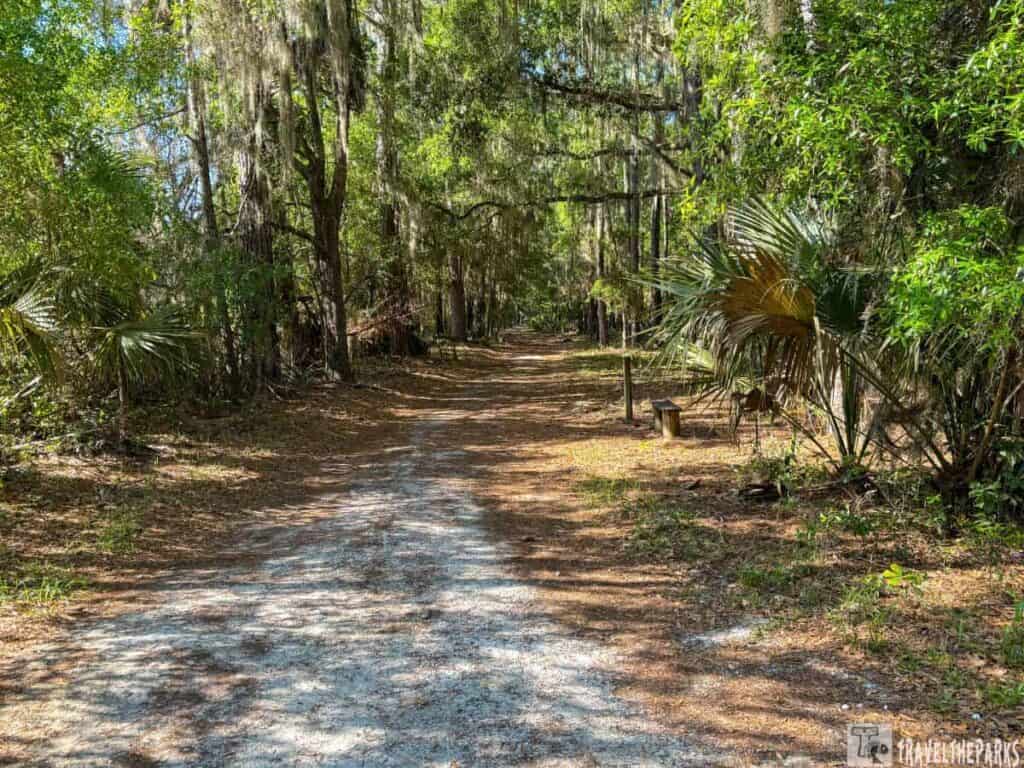
Jackson’s Gap Trail
On our return from the visitor center, we decided to take the 1.3-mile Jackson’s Gap Trail. The path led us through pine flatwoods and hardwood hammock, providing far more shade than the park road. It was easy to imagine what the area must have looked like when William Bartram explored it in the 1700s—untamed with winding trails stretching through wild, open spaces.
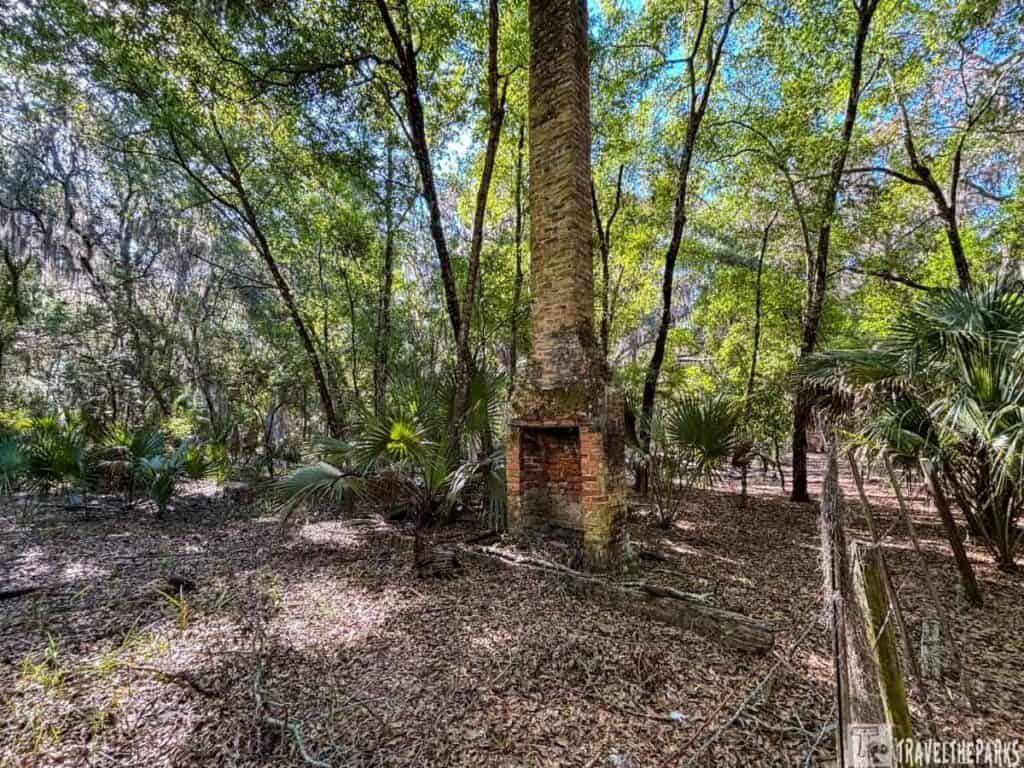
As we continued along the trail, the remains of an old homestead slowly came into view. Hidden in a small clearing, almost swallowed by the surrounding ferns and thick shrubs, stood the ruins of an old fireplace—a silent reminder of the area’s cattle ranching days. It was as if nature itself was claiming the space back. It was a spot to stop and reflect, a moment suspended in time.
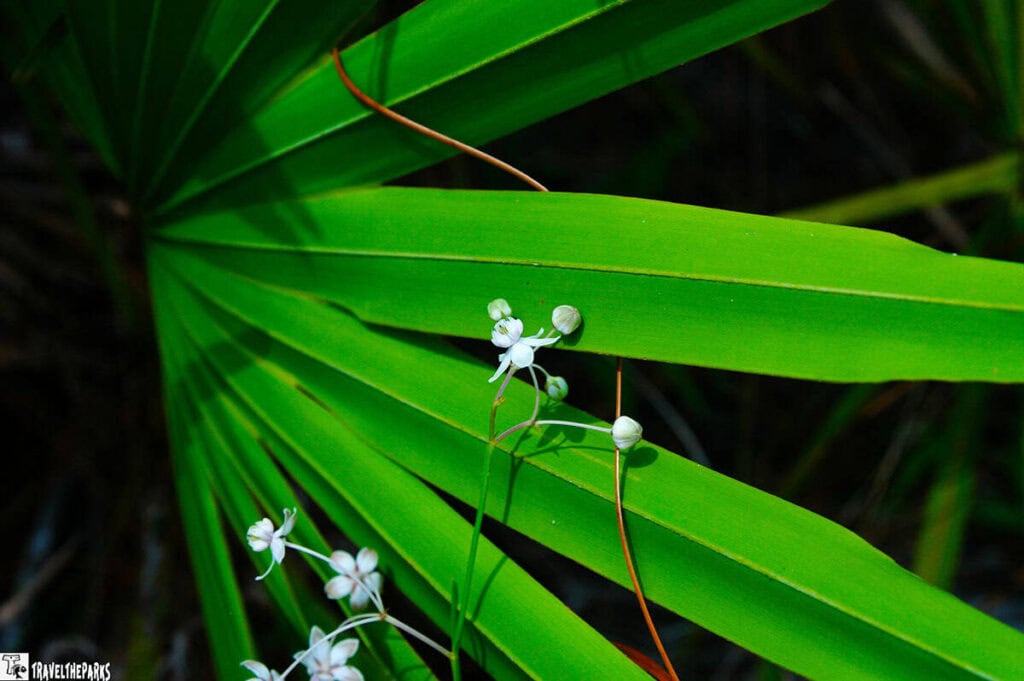
This trail is a connecting route between Cones Dike and Chacala Loop Trails, so you can make it a loop. Bring bug spray, sunscreen, water, and binoculars. The Chacala Loop Trail is ideal for a late afternoon bike ride. It is made up of a series of color-blazed loops totaling 6.5-miles. You can adjust your hike or ride based on your time.

Biking in Paynes Prairie
Cycling enthusiasts will find Paynes Prairie Preserve State Park a fantastic destination. Plenty of trails to explore on two wheels. E-bikes are allowed on the park road and bike trails, so it is perfect for those who do not wish to exert themselves but still get to cover plenty of ground. These trails, particularly those going through more desolate or marshy lands, primarily require fat-tired bikes. The large tires help you navigate the varied surface conditions on the trail, such as sandy spots and rare mud situations. Our favorite trail to ride was the 8.25 mile (RT) Cone Dike Trail (No pets).

Biking the Cone Dike Trail
When we stopped by the visitor center, the park rangers told us we had an excellent opportunity to see bison or wild horses along the trail. We set out early, riding our bikes down a grassy path that followed a dike stretching across the prairie. The long, grassy, straight-as-an-arrow path cuts deep into the heart of the prairie basin, offering wide-open views on both sides — perfect for scanning for large wildlife.
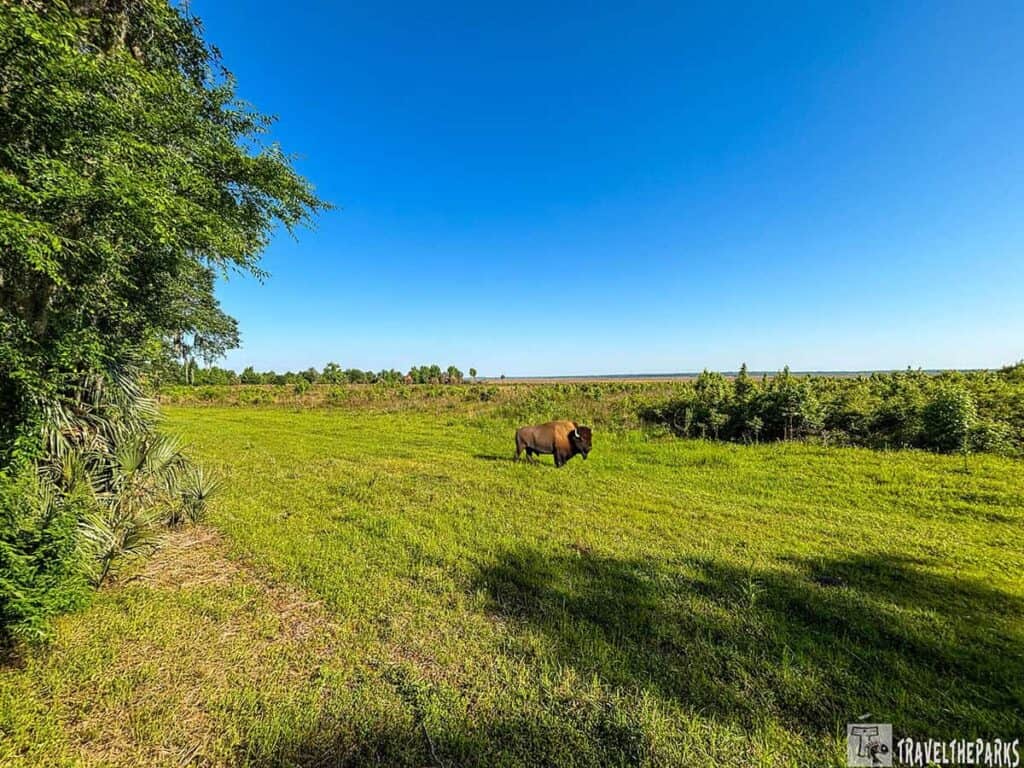
Then, out of the corner of my eye, I spotted a large, dark shape moving steadily through the grasses, just off the trail. At first, it’s just a shadow, but as I focus, I realize: it’s a lone bison. The grassland prairie created the perfect backdrop for this incredible animal. We stood there for a few moments, watching the bison move slowly but steadily before disappearing into the treeline. We couldn’t believe our luck. What a moment.

More Hiking Trails in Paynes Prairie State Park
- Bolen Bluff Trail (2.6 miles): This scenic loop winds through shady forests and opens up to beautiful overlooks. Perfect if you want a hike or bike ride that’s both rewarding and a little challenging. (No Pets)
- Wacahoota Trail (0.25 miles): A quick, easy stroll—mostly paved—that links the visitor center to the observation tower. Great for a short walk, and your furry friends are welcome!
- Ecopassage Observation Boardwalk: tucked just off U.S. 441. This short boardwalk extends over the wetlands. Here you might spot wading birds, turtles, or even an alligator or two lounging near the water’s edge.
- Gainesville-Hawthorne State Trail (16 miles): A long, flat stretch through peaceful countryside. Loved by cyclists, walkers, and runners—and yes, dogs are allowed too!

Enjoy a Peaceful Picnic in the Park’s Recreation Area
After wandering the boardwalks, nothing beats collapsing into a shady spot with an ice-cold drink and a satisfying sandwich. Paynes Prairie delivers the perfect picnic setup–weathered wooden tables tucked beneath ancient live oaks. Their gnarled branches create nature’s perfect canopy. For the ultimate lunch with a view, we snagged one of the pavilions near Lake Wauburg. Just relaxing, taking in the view.
For parents staying at the campground, the nearby playground is a godsend. We sat and watched many kids burning off their post-meal energy. It’s the kind of simple, unhurried afternoon that turns a regular park visit into something special. Facilities here include an amphitheater, playground, pavilions, picnic area, grills, bathrooms, boat ramp and fishing pier. You can join a ranger-led campfire program at the amphitheater on Saturday evenings (November through February).

What Essentials to Bring with You
When exploring Paynes Prairie, it’s best to come prepared for Florida’s ever-changing conditions. Bring plenty of water, especially if you’re hiking or biking the longer trails like Cone’s Dike or the Chacala Pond Loop. Sunscreen, a hat, and bug spray are must-haves, even on cloudy days — the prairie sun can be intense, and mosquitoes thrive near wetlands. Wear sturdy, comfortable shoes that can handle both sand and mud, and consider binoculars or a camera for spotting bison, wild horses, and birds. If you’re out for more than an hour or two, pack a snack or light lunch, and a map or GPS, since cell service can be spotty in some areas. And don’t forget your sense of curiosity — Paynes Prairie is full of surprises.

Final Thoughts: Paynes Prairie Preserve State Park Belongs on Your Florida Bucket List
I really have to say we found Paynes Prairie Preserve State Park to be an amazing experience that we can never forget with its wandering bison herds, giant prairie vistas, and a network of scenic trails. There were so many choices — from cycling through meadows at sunset, watching alligators from boardwalks, to wandering along the trails once trampled by Spanish explorers — and you could hardly get bored. The place is definitely not just some run-of-the-mill state park – it represents the wild side of Florida in a stunning view. If you don’t believe us, go and have a look yourself why this fascinating landscape has been a magnet for visitors over centuries.
Have you explored Paynes Prairie? What’s your favorite trail — La Chua, Cone’s Dike, or maybe the Chacala Pond Loop? Ever spotted a bison or wild horses?

